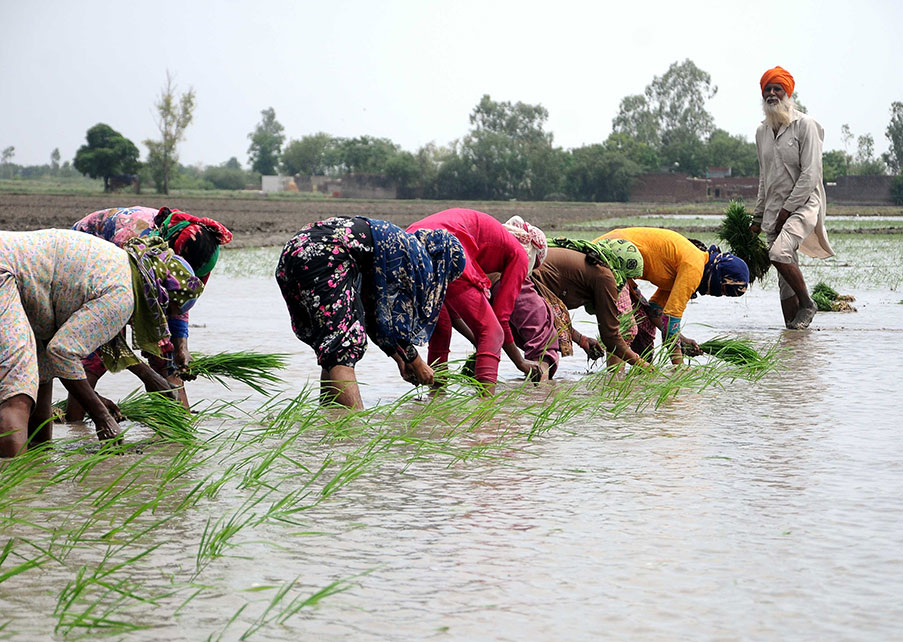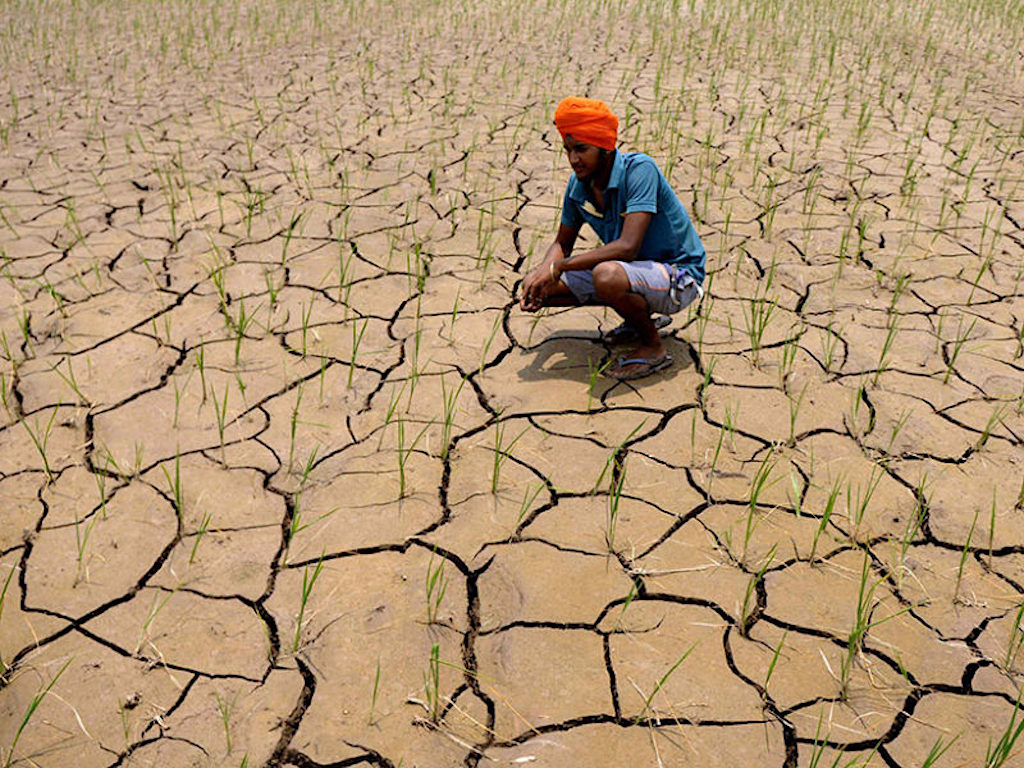5 Mins Read
By: Gurpreet Singh
Water-guzzling rice consumes more water than Punjab can recharge. If current irrigation rates continue, the state will empty its groundwater reserves within 20 years.
Punjab, a landlocked state in northern India, has a predominantly agriculture-based economy that earns it the nickname the “food bowl of India.” However, experts worry that if the region continues to extract groundwater at current rates, there may not be enough water to grow crops, and the state could be economically and ecologically devastated.
Punjab is slowly starting to adopt measures to control water mining, but the losses are set to continue without more aggressive initiatives.
How the Groundwater Dropped
In the mid-1960s, Punjab’s agricultural sector blossomed, owing in part to federal subsidies for fertilizers and pesticides. In the 1970s, the state government established a corporation to access the region’s abundant groundwater by constructing thousands of wells.
Today at least 40% of India’s surplus food stocks are harvested in Punjab. By May of this year, during peak growing season, the Food Corporation of India reported it had collected nearly 13 million metric tons of wheat in the region, despite the coronavirus lockdown. Last year, it collected 11 million metric tons of rice from Punjab.
In the pursuit of growing more rice and wheat, more than 1.4 million agriculture tube wells have been dug in Punjab over the past 60 years. On average, groundwater levels have sunk 51 centimeters every year.
Last year, groundwater levels fell more than 60 centimeters, said Gopal Krishan, a hydrology and soil scientist at India’s National Institute of Hydrology working on a report soon to be released by the institute. “This is alarming,” he said.
More than 3.35 cubic meters of water are needed to grow 1 kilogram of rice, according to India’s Commission for Agricultural Costs and Prices. Cultivated over 2.7 million hectares, an estimated 11 billion kilograms of rice grow in Punjab every season. The water demanded by these rice crops (equivalent to nearly 36 billion cubic meters of water) amounts to 27 times more than the yearly household consumption (1.3 billion cubic meters) by the 28 million people living in the state.
Deeper Waters
Farmers’ worries have been mounting since Punjab’s 2020 growing season for rice started in June.In the 1960s, “groundwater was available at 3 meters. Now tube wells are dug as deep as 150 meters.”Nek Singh, a 75-year-old farmer in the region, has witnessed dropping water levels over the past half century. In the 1960s, he said, “groundwater was available at 3 meters. Now tube wells are dug as deep as 150 meters” to reach the rapidly receding groundwater level. “Even if water is available deeper, it would not be economic, and we may have to shut our farms,” Singh said.
Geographically, Punjab is divided into 138 administrative blocks; only 22 of these blocks have sufficient groundwater supplies, according to the 2017 assessment by India’s Central Ground Water Board. The rest are at critical levels. “Loss of water is severest—more than 1 meter in a year—in 40 blocks,” said Punjab’s state hydrogeologist Rajesh Vashisht. Districts in which these blocks are located have been notified that they cannot allow new irrigation tube wells.
“We can’t go deeper, as it would be unviable to pull out water from aquifers at such a depth,” said Vashisht. “The aquifers may not dry completely, but how deep can we go? A day will come when extracting water at a certain depth will be bad economics.” This year, the Punjab government will pay a projected 65 billion rupees (approximately $8.45 million) for electricity to run the wells, a major portion of the state’s annual budget.
Confirmed Losses
“It would be a desert here if we continue to exploit our only natural resource,” said agricultural economist Sardara Singh Johl, currently the chancellor of the Central University of Punjab in Bathinda. When he was the chancellor of Punjabi University in the mid-1980s, Johl (now 93) sounded an alarm in a report submitted to the government, asking farmers and the government to stop the depletion of groundwater by diversifying crops and halting rice production. “No one listened,” he said.
In 2009, researchers reported a “mind-boggling rate” of groundwater decreases over the previous near decade in the northern Indian states of Punjab, Haryana, and Rajasthan. More than 109 cubic kilometers of water had been pulled out of the region’s aquifers, according to data collected by NASA’s twin Gravity Recovery and Climate Experiment (GRACE) satellites, launched in 2002.
In its 2017 report, the Central Ground Water Board concluded that at current rates of extraction, Punjab’s groundwater resources may be exhausted in 20–25 years.
Referring to the latest groundwater estimates, jointly prepared annually by Punjab’s Department of Agriculture, Department of Water Resources, and the Central Ground Water Board, Vashisht said that “Punjab is consuming 166% groundwater for irrigation.”

Digging Deeper
Alarmed over the radical changes in groundwater levels, the state government engaged Israel’s national water company Mekorot Development and Enterprise Ltd. to find solutions. Mekorot will assess the scale of the problem, and the company has started gathering data across Punjab.
Earlier this year, the state also created a water regulatory body, the Punjab Water Regulation and Development Authority. Punjab’s government also may ban digging of new tube wells and make registration of all existing tube wells mandatory.
In the end, however, the problem may be more political than hydrological. In 1997, Punjab’s governing party decided to pay electricity costs to operate all tube wells in the state. With strong opposition from farmers, Punjab’s government may have a hard time revoking that subsidy, even as the state’s groundwater disappears.

This story originally appeared in AGU’s Eos Magazine and is republished here as part of Covering Climate Now, a global journalistic collaboration to strengthen coverage of the climate story.
Lead image courtesy of Gurpreet Singh.




